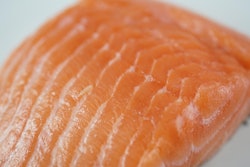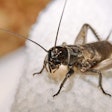
The canine dilated myopathy scare may have given peas a bad name as a pet ingredient, but that reputation ultimately proved unwarranted. Research continues to show that pea-based ingredients can be a healthy part of dogs’ and cats' diets. Fermented pea starch may even be beneficial and healthier than standard peas and other ingredients. Researchers evaluated whether fermented pea starch improves palatability and health indicators in dogs and cats compared to unfermented pea starch or a corn‑based control.
“Pulse-based pet foods often contain peas or pea starch, which tend to impart a bitter taste,” the researchers wrote in Frontiers in Veterinary Science. “Fermentation increases feed palatability, but also has the potential to improve overall health.”
Both pea-based diets, fermented and unfermented, led to lower plasma triglycerides, cholesterol and leptin in dogs and cats versus the corn diet, indicating improved metabolic health. In dogs, the fermented pea diet notably enhanced fecal microbial diversity, while both pea diets increased richness and evenness of the microbiome and boosted the relative abundance of Faecalibacterium compared to the corn diet. However, cats experienced poor-quality fecal samples (especially on unfermented peas), preventing reliable microbiome analysis—although fecal butyrate was lower on both pea diets versus corn, possibly due to lower pea-fiber content in those diets.
Diets were fed in 20‑day crossover trials to eight beagles and seven mixed‑breed domestic cats, with measures including blood chemistry, adipokines, lipid profiles, fecal short‑chain fatty acids and gut microbial diversity. The pea-based ingredients made up approximately 30% of the recipes.
Species-specific observations of pea-based diets’ effects
Dogs
- Dogs consumed all diets readily, with no change in body weight or condition scores across diets.
- Protein, starch and energy digestibility were higher with the fermented pea diet versus the unfermented version.
- Inflammatory markers declined on the pea-based diets, including lower total white blood cell, neutrophil and lymphocyte counts. Leptin concentrations were lowest in dogs fed the fermented pea diet, suggesting reduced inflammatory status and improved metabolic regulation.
Cats
- Cats showed reduced intake of the unfermented pea diet, accompanied by weight loss and loose stools, likely due to bitterness and gastrointestinal upset. In contrast, the fermented pea diet maintained intake and body weight.
- Plasma cholesterol and leptin were lower on both pea diets than on the corn diet, despite physiologic glucose and urea changes remaining within reference ranges. Adiponectin was unaffected by diet in either species.
Mechanistic insights and interpretation
Pea starch offers low‑glycemic carbohydrates and soluble fiber, factors associated with cholesterol and triglyceride reductions in humans and dogs. Reduced anti-nutritional compounds (like tannins and phenols) following pea fermentation may have contributed to improved lipid digestion and palatability.
Poor fecal quality in cats fed unfermented peas limited microbiome analysis, underscoring species differences in tolerance and palatability. Despite that limitation, metabolic improvements, specifically reduced triglycerides and leptin, occurred without weight gain in cats fed the fermented pea diet.
However, the results of this experiment had limited application to commercial diets. The investigation included only eight dogs and seven cats and used a 20‑day feeding period, which was yet shorter for cats due to food refusal. There was no test diet where fermentation products, which included yeast extracts, were added to an unfermented pea diet, so separating the effects of the yeast from fermented pea starch was not possible.
Nevertheless, incorporating pea starch into diets showed benefits for metabolic health in both dogs and cats, and fermenting the starch with Candida utilis yeast offered additional gut microbiome advantages in dogs and improved palatability in cats.

















